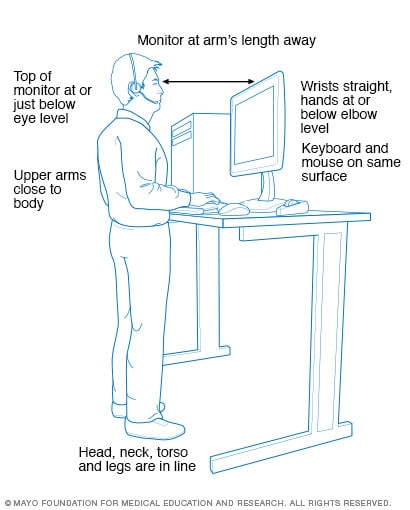Ergonomic Self Adjustment
Fleming College has introduced new ergonomic standards for our employee office furniture. These adjustable and flexible furniture items will be gradually rolled out across the college as we continue to update and enhance our working spaces.
Employees are encouraged to use the resources below to self adjust their workstation so that the furniture is set to the most optimal way for the specific user.
How to save preset desk heights
How to adjust a chair for your height

Stretches and Exercises
When it comes to stretching to prevent MSDs, shorter and more frequent breaks are preferred over longer breaks. It is generally recommended that you pause and stretch at least once per hour. If your job consists of continuous data entry, it is recommended that you take a 5 minute stretch break every 30 minutes. If you feel any body part getting stiff between your stretch breaks, take a moment, and stretch it out. If it is impractical to take a break for this long, remember that taking a short break, even 30 seconds, is better than none at all.
It is important to stand up and move around when you stretch. This allows your body to have a change in posture and will also help to minimize stiffness and fatigue. It is also suggested that if you are doing an activity where you do not have to be sitting, such as talking on the phone, that you perform it while standing up.
When working on a computer you should occasionally look away from the screen, and focus your eyes on a distant object. This will allow your eyes a chance to relax and help prevent eye strain.
There following stretches for the neck and shoulders, hand and forearm, back, and legs below will help to reduce discomfort during the work day.
Stretches for the hands and forearms
Stretches for the neck and shoulders
Download the APPs
1. Office Ergonomics – ewi works
|
2. PainPoint – Prevent Musculoskeletal Disorders (MSDs) at Work |
This smartphone application (app) delivers a basic ergonomic assessment by stepping the user through a series of diagrams and questions to pinpoint musculoskeletal pain, identify possible sources, and discover practical solutions. The results are presented on a body map, with recommendations to address work-related MSD hazards that could be contributing to their discomfort.




